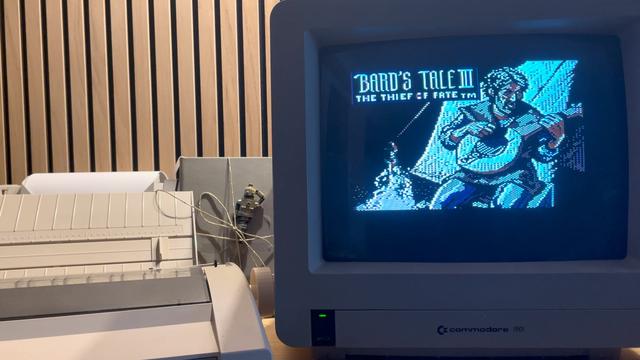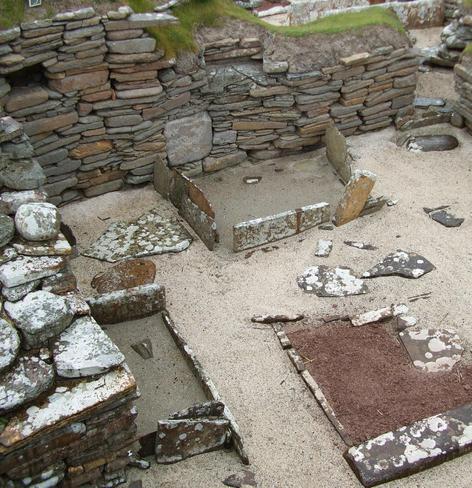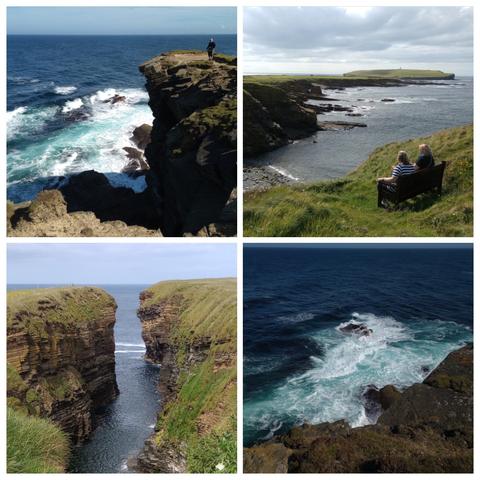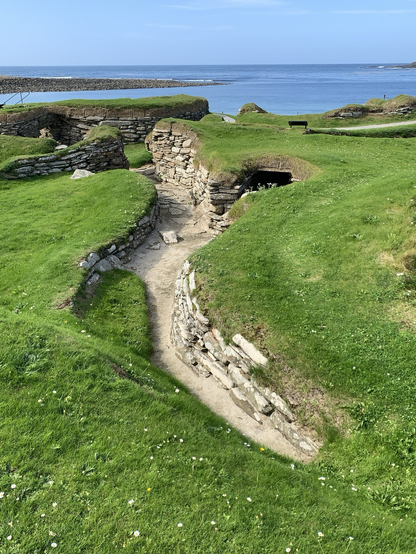Inspired by a Visit to Skara Brae : ‘The Orcadians’
#skarabrae
NEU IM BLOG von @the8bittheory: Ich war 12, als ich mich mit meiner Party von Abenteurern im verfallenen Skara Brae wiederfand. Völlig auf mich alleine gestellt. In The Bard’s Tale III. :underheart:
https://www.videospielgeschichten.de/the-bards-tale-iii-in-skara-brae-mit-12-allein/
#C64 #Retro #Rollenspiel #SkaraBrae #TheBardsTale #Videospiele
The Bard’s Tale III – In Skara Brae. Mit 12. Allein.
Ich war 12, als ich mich mit meiner Party von Abenteurern im verfallenen Skara Brae wiederfand. Völlig auf mich alleine gestellt. In The Bard’s Tale III.
https://www.videospielgeschichten.de/the-bards-tale-iii-in-skara-brae-mit-12-allein/
#C64 #Retro #Rollenspiel #SkaraBrae #TheBardsTale #Videospiele
Of course, Neolithic people had boats to get them from Europe to Britain, Ireland, and Orkney.
Everybody says it, so it must be true. Mustn't it?
https://orkneyriddler.blogspot.com/2025/07/they-must-have-had-boats.html
#neolithic #Britain #Orkney #archaeology #prehistory #Brodgar #Stenness #north-sea #skarabrae #harrayloch #nessofbrodgar
The Neolithic people of Britain were a nomadic group of cultures that entered the country from the Dutch region of northern Europe from before 7000 years ago until after 6000 years ago.
They came on foot, across a land bridge that is now shallow water between Holland and East Anglia, in England.
These people brought with them a suite of technologies, including pottery, domesticated animals, landscape structures, economic systems, community activities, timber joinery, structural engineering, and small-scale industries.
They had boats, but these were limited to dugout canoes for use on inland waters, lakes, harbours, and perhaps for crossing rivers.
In spite of their construction of cairns, these people retained their nomadic lifestyle, at least here in Orkney. They would cross from Caithness to South Ronaldsay along a strand made up of geologically soft sediments between those locations.
They came to Orkney every summer, returning to the south when the weather turned. As they crossed, from year to year, the people would have noted that the strand linking the two regions was narrowing. Sea levels were rising and coastal beaches were being eroded by strong tides.
At the very end of the 4th millennium BC, when sea-level wasn't yet high enough to cause concern, the summer solstice, and the Orkney Simmerdim, became an annual event, drawing hundreds of people to settle in temporary campsites around the Harray Loch.
While they were temporary residents, camping in Orkney, these huge groups built some of the monuments of the Orkney World Heritage Site. These include the Maeshowe Chambered Cairn, the Stones of Stenness, and the Ring of Brodgar.
As seasons progressed, and people returned to Orkney, to continue this great work, the sea rose, and whittled away at the strand that joined Caithness to Orkney.
At a critical point in the erosion of the strand between Caithness and Orkney, most people no longer returned to Orkney. Their campsite was abandoned just after 3000BC, and the stone circles that they were building remained, incomplete.
The very few people that remained in Orkney formed into small co-habiting communities, and built solid structures of stone and timber, with covered drains, and great windbreaks, or covered interconnecting passages.
These communities were based at Skara Brae, and the Ness of Brodgar.
In the middle of the 3rd millennium BC boats were being developed , and people were setting out to explore offshore islands, like Orkney.
When the mariners in their boats arrived in Orkney in the second half of the 3rd millennium BC it is possible that they met face-to-face with some of the surviving ancestors of the Neolithic Orcadian Founding Population.
https://orkneyriddler.blogspot.com/2025/07/neolithic-migration-to-orkney.html
#neolithic #Britain #Orkney #archaeology #prehistory #Brodgar #Stenness #north-sea #skarabrae #harrayloch #nessofbrodgar
Out of a mood I've decided to return to #SkaraBrae after more than three decades, hopefully prepared well enough ...
The title is a little hyperbolic. There's no dark secret, just a cultural practice still prevalent today in some parts of the world, but this is a fascinating glimpse into how humans lived 5,000 years ago.
Skara Brae: The 'Dark Secret' Hidden Inside 5,000-Year-Old House | BBC Timestamp - YouTube
https://www.youtube.com/watch?v=tlwxGvUy4Ks
I could never quite believe that Neolithic people came to Orkney by boat.
As it is thought that they brought cattle and sheep with them, I could not envisage any animal, or any human, surviving a sea crossing of any British tidal waters in any prehistoric vessel.
Standard sources tie themselves in knots to persuade us that Neolithic people had boats that could carry beasts of both sexes that, once landed, would reproduce and help their tribe to survive on the unknown territory across the dangerous waters.
However, evidence has recently emerged that added another dimension to the problem. It was discovered that the Orkney Vole, a species that is unique to the archipelago, had been found by DNA analysis, to originate from northern Europe, and that it was not directly related to the common vole in Britain. (Thomas Cucchi et al)
This meant that the animal that arrived in Orkney did not pass through England, Wales or Scotland.
A vole arriving in Orkney, from Europe, without passing through Britain was a clue that all was not as it seems, and that in spite of the insistence of some that voles may have been carried as pets or food items, another possibility was probably more likely.
I therefore rather assumed that it must be necessary to question what places were passable around the coasts of Neolithic Britain, which areas were land, and which places were water, and when did land areas stop being land.
It is understood that much of the southern North Sea area was land at some point in the past. A piece of shallow sea called Dogger Bank has been named Doggerland as artefacts of 8000 years of age, and older, are frequently dredged up there. The rise in sea level which has occurred since the last ice age has clearly flooded lands here, but which lands, where, and when?
The obvious location, or so I thought, for a route to Orkney from Europe , that would be passable for small rodents, on foot, and avoiding England and Scotland, would be somewhere in the middle of the North Sea which, of course, is a bizarre idea.
Indeed, it was such a bizarre idea that I followed it, to see where it took me.
The result of my research can be seen in my blog:-
http://orkneyriddler.blogspot.com/2025/04/the-orkney-riddle.html
#Orkney #Neolithic #archaeology #prehistory #Brodgar #nessofbrodgar #Skara #skarabrae #barnhouse #knapofhowar #linksofnoltland #Noltland #cairns #Maeshowe
Skara Brae
Historic Environment Scotland, Statement Of Significance, Skara Brae
“The excavated remains of Skara Brae, as currently presented, consist of a tightly clustered grouping of stone-built structures connected by narrow passageways. The structures, many of which are interpreted as houses, have internal fittings of stone. There were two main phases of building and occupation in the development of the settlement, with a gap relating to the probable abandonment of the settlement due to inundation by sand.
Individual buildings were, at first, freestanding, with open passageways between them. Some of the passageways were subsequently roofed over, creating the passages visible today.
Skara Brae was occupied at various times – not continuously – from the late fourth Millennium to the mid-third millennium BC (with sporadic activity after that). Recent Bayesian modelling of radiocarbon dates has indicated that while occupation on the site started at some time between 3360 and 3160 cal BC (with the inhabitants using pottery that was probably round-based: Phase 0), the earliest houses that survive today (Phase 1) were constructed in the early third millennium BC (from 2920–2885 Cal BC).
After less than a century of occupation – possibly as short a period as 50 years, that means two generations – the settlement seems to have been abandoned (probably as a result of inundation by sand), around 2870–2760 cal BC. It was then reoccupied, with new houses being built and some old houses being remodelled (early House 7, for example), within the time frame of 2840–2685 cal BC and remained in use until 2545–2440 cal BC. After its abandonment, there are hints of ‘squatting’-like activity at various times including the Iron Age (as demonstrated by, amongst other things, a horse tooth bead radiocarbon dated to 170 cal BC–cal AD 10, SUERC-40339, 2060±30 BP).
Activity after the settlement’s abandonment also included the deposition of human remains at various times, with some of the disarticulated bones found during the nineteenth century having recently been radiocarbon dated (for Whittle and Bayliss’ The Times of Their Lives project and for Rick Schulting) to the late third to early second millennium BC – the time when beaker pottery was in use in Orkney."
Whatever happened through the 3rd millennium BC, the data, as expressed here shows a surprisingly clear separation between the occupation of Skara Brae before 3000BC, and the development after, again suggesting that something happened at that date affecting how the inhabitants of Orkney could live.
#neolithic #archaeology #prehistory #skarabrae #Skara #Brae #C14 #Orkney
One of the neolithic houses at Skara Brae, Orkney.
The beach and seawall at the Bay of Skaill near the Neolithic village of Skara Brae. The seawall was built in the 1920s to protect Skara Brae from coastal erosion. Climate change is increasing the risk that Skara Brae will be destroyed by storms and rising sea levels.
As for the miniature stone circles that someone has arranged on the sand — they'll be gone even sooner!
#StandingStoneSunday #SkaraBrae #Orkney #Scotland #ClimateDiary
A quick visit to Skara Brae yesterday afternoon, after completing a bit of research on the other side of Skaill Bay. I was lucky enough to have it all to myself, bar the wonderful staff that it.
#skarabrae #prehistory #prehistoric #neolithic #archaeology #archaeologist #orkney #orkneyislands #visitorkney #visitscotland
Scotland has a rich history dating back to seasonal settlements around c. 10,500 BCE and permanent residences by c. 7000 BCE. #History #StirlingCastle #SkaraBrae #Scotland(Ancient) #HistoryFacts https://www.worldhistory.org/collection/276/a-gallery-of-standing-stones-cairns-and-castles-of/
LAS ISLAS BRITÁNICAS EN LA PREHISTORIA
Skara brae, el misterioso asentamiento neolítico de las islas orcadas
#IslasBritánicas #Escocia #skarabrae #UNESCO #historia
Strand of bone beads (3100–2500 BCE) part of the finds from Skara Brae, Orkney, Scotland. Restrung, the strand is formed of 72 flat bone beads and measures 9.3cm. Source and Photo : Trustees of the British Museum, Accession Number 1938,0101.62
#BeadSocietyGB #Beads #HistoryOfBeads #SkaraBrae #BritishMuseum #BoneBeads
Today's Flickr photo with the most hits takes us to Orkney.
One of the neolithic 'houses' at Skara Brae.
My sister-in-law and her husband moved to #Orkney this year. I thought they were crazy (too isolated for me) but we just spent a week visiting and my God it's beautiful. All of a sudden I understand the appeal
An uncovered neolithic corridor between houses at the settlement at Skara Brae, in the Orkney islands. I can imagine children running and playing in these corridors.
#silentsunday #skarabrae #humans
Booked some trips in #Scotland for May when we'll be there for a few days; we've only visited once before. Planning to explore #Edinburgh and #Inverness without any firm plans; just see what we like the look of. We were considering #Glasgow but have decided that a trip on the #FalkirkWheel and a nose around #Stirling appeals more. And then we've made sure we're on a tour to see #SkaraBrae, the Ring of Brodgar, and Skaill House on #Orkney.










